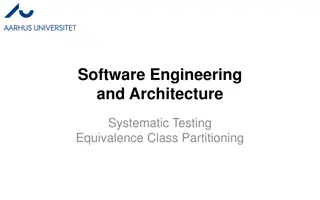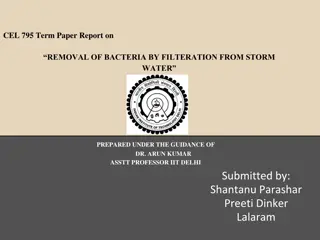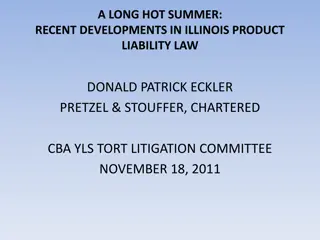Efficient Defect Removal in Product Development Processes
Product development processes involve effective defect removal to ensure quality outcomes. This includes eliminating defects systematically, managing development processes efficiently, and conducting inspections and operations to identify and remove defects. The goal is to increase removal effectiveness, develop larger products, and enhance overall quality.
Download Presentation

Please find below an Image/Link to download the presentation.
The content on the website is provided AS IS for your information and personal use only. It may not be sold, licensed, or shared on other websites without obtaining consent from the author. Download presentation by click this link. If you encounter any issues during the download, it is possible that the publisher has removed the file from their server.
E N D
Presentation Transcript
Left Some defects are easier to remove than others. This is the cruise ship Costa Concordia, which partially sank on Jan 14, 2012, just off the rocky coast of the Italian island Giglio, with a ripped hull. 32 people died. The ship was refloated in order to remove it and cut it up for scrap. Defect Removal Effectiveness Kan ch 6 Steve Chenoweth, RHIT 1
Quality is two things The presence of good things. And, The absence of bad things. In Ch 6, Kan focuses on the latter. In theory, it also covers the former. You can test for the presence of a feature. If it s not there, it s a bad thing. 2
Defect removal Assumption we can do this is based on our philosophy about how things are made: It can be done right (probably). We can discover (eventually) if it s not right. If we discover that, we can fix it (with a struggle). Most things we do are worth fixing if you know they are not right. 3
Defect removal effectiveness Has to do with eliminating defects systematically. Also efficiently. Also, before the customer sees them! And, managing our development processes: There ought to be a way to be more effective or efficient about improving quality. Being good at this could let us develop bigger, more complex products. 4
Inspections / operations A process where we try to eliminate defects. Testing itself is unique, among these. Arguably, it doesn t inject defects. Just finds them so they can be removed. Actually, inspections are the same way. But they may be considered part of something bigger Like requirements gathering, design, etc. 5
What is removal effectiveness? A ratio how many we got, out of what we could have achieved: __ Defects found or removed__ * 100% Defects present that we could have So, how do we know what we could have? These = the number eventually found! 6
Related theme early detection Results of IBM Houston s Early detection program for Space Shuttle software, mid-1980 s. 7
Which gives results like Unit Test Effectiveness TE(UT) = 332/(332+387+111+81) * 100% = 332/911 * 100% = 36% Defect Removal Effectiveness DRE = ( 3465 81 / 3465 ) * 100% = 97.7% 11
Kans special two-phase model Assumes that: 1. There are only two phases of defect removal. 2. Their effectiveness is the same. Kind of hypothetical! 14
Two-phase model, cntd Definitions: MP = Major problems found before formal testing PTR = Errors found in formal testing or field = MP/PTR, where > 1. Q = defects in released software. TD = Total defects over life: MP + PTR + Q. 15
Two-phase model, cntd Model allows you to conclude that: Q = TD / 2 So, for example, in Fig 6.4, if TD = 34.6 defects / KLOC, and Q = 0.81 defects / KLOC, then 0.81 = 34.6 / 2 , and = 6.5. If the effectiveness is the same for the two phases, then the number of defects to be removed by the first phase must be at least 6.5 times the number to be removed by testing in order to achieve the quality target. 16
But, early inspections must be rigorous Fagan s model 5-step inspection and walkthrough: Overview (for communications and education) Preparation (for education) Inspection (to find errors and to walk through every line of code) Network (to fix errors), and Follow-up (to ensure all fixes are applied correctly) 18
Related to process maturity? Jones s defect removal rates for different CMM levels: Level 1: 85% Level 2: 89% Level 3: 91% Level 4: 93% Level 5: 95% 19
Kans recs for small orgs Defect removal effectiveness bears a direct correlation with quality of field performance. Start with the overall defect removal effectiveness indicator and the test effectiveness indicator. Assess the stability or variations in these across projects and improve them. Compare with industry baselines. Start to examine inspection effectiveness, and loop back for continuous improvement. Use a tracking system to gather data bout defect origins. 20
And, in conclusion The lead character, Jep, in the movie The Great Beauty, considers the disaster that you already considered. It won the 2014 Academy Award for Best Foreign Film. Quality. 21























